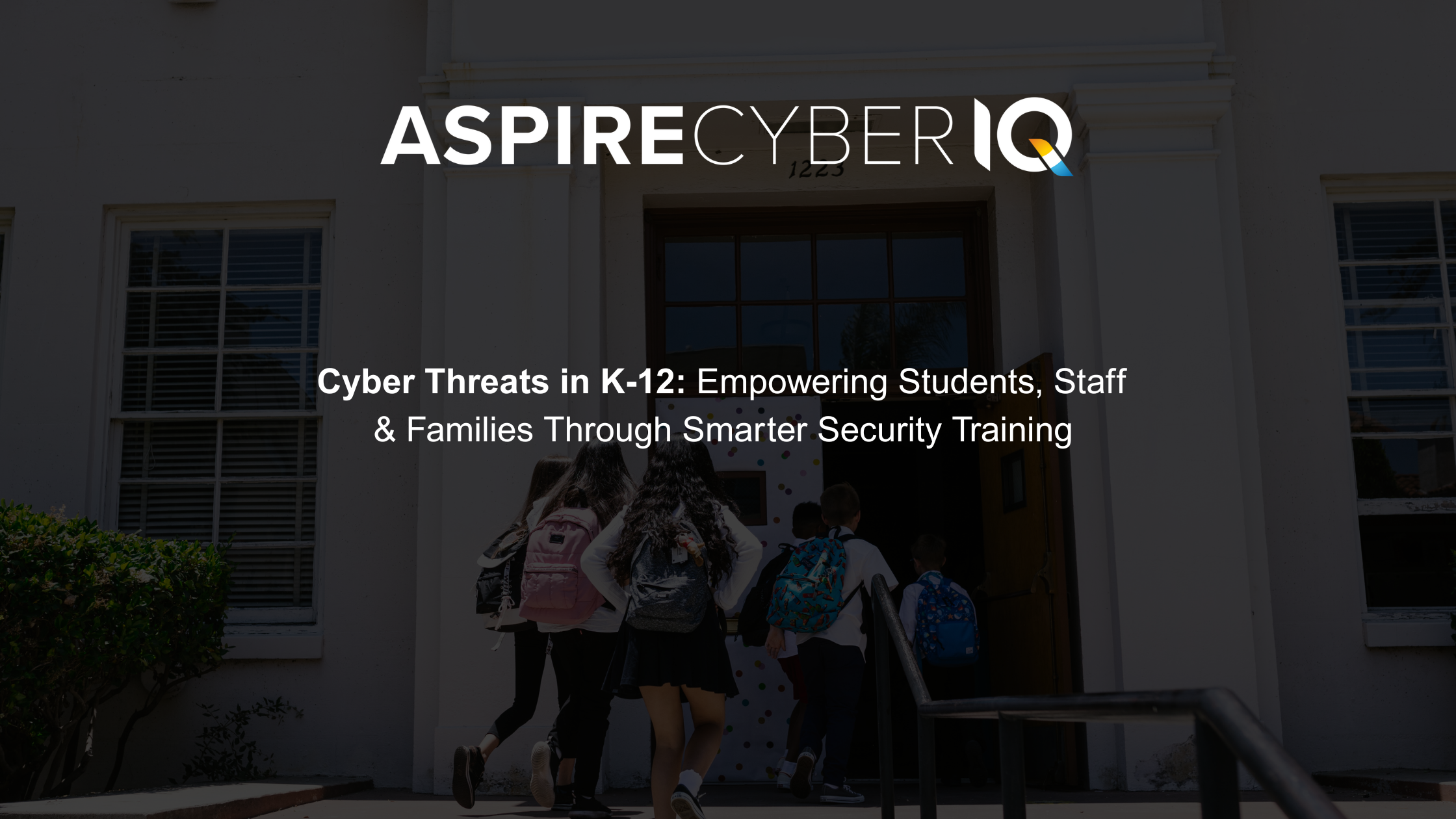Cyber Threats in K–12: Empowering Students, Staff & Families Through Smarter Security Training
By Nick Kelly, Senior Security Solutions Architect
Today’s K-12 students are fundamentally different from generations before them. As true digital natives, they’ve grown up in a world where constant connectivity is the norm. Their lives unfold online – whether through social interactions, gaming, collaborating, or learning. Yet, despite the central role technology plays in students’ daily lives, many K-12 schools struggle to keep pace, lacking the visibility and tools needed to effectively monitor and protect their students.
The Threat is Real – and Growing
A recent report from The Center for Internet Security revealed that 82% of surveyed K-12 schools reported experiencing impacts due to cyber threats, including over 14,000 security events and 9,300 confirmed cybersecurity incidents. When schools suffer breaches, it could lead to the exposure of highly sensitive data, like home addresses, Social Security numbers, and even disability and disciplinary records.
And with the rise of AI, the risk is only accelerating. Generative AI or GenAI (artificial intelligence models that can create new content, such as text, images, audio, and video, based on data that they have been trained on) is fueling more convincing and highly targeted phishing attacks, increasing the chances of exposure. In fact, phishing attempts rose 28% in Q2 of 2024, and a recent survey found 80% of employees were willing to follow AI-generated instructions, even when they were potentially malicious.
The Human Layer: Your Strongest Defense
Technology alone isn’t enough. The most effective cyber security strategies start with education, and not just for IT teams, but for everyone in the school community: students, staff, and even families. Security training should be customized for each of these groups. Social engineering attempts can be stopped if the target knows what to look for.
Phishing tactics vary widely, from clickbait and malicious attachments to attempts at stealing login credentials. To effectively reduce the risk of successful phishing attacks, schools can tailor security awareness training to the specific threats each group is most likely to encounter. For example:
- Students might receive phishing messages disguised as Discord or chat invitations, messages to watch a new video on YouTube, or contribute feedback from a game developer.
- Parents could be targeted with phishing attempts that resemble LinkedIn messages, financial record updates, payment receipts, or incident notifications.
- Staff may face more sophisticated threats like fake vendor communication, urgent passwords resets, or AI-generated messages requesting sensitive data.
By creating tailored training, that is age-appropriate and speaks to users’ maturity levels, we help each group identify red flags, such as urgent messages, suspicious links, or unusual requests that they are most likely to receive and teach them how to respond appropriately.
Tools & Training that Make a Difference
Security awareness training is easier than ever to roll out. Content modules that cover each of these topics allow schools to deploy engaging, age-appropriate content to students, teachers, and staff members. Trainings can be supplemented with realistic phishing simulations in a controlled and safe environment, turning students and staff into security champions, not just by protecting themselves but helping to create a school-wide culture of cyber awareness, building the safest cybergeneration yet.
Don’t Forget the Extended Ecosystem
Malicious actors also target the third-party organizations that support K-12 schools. This includes organizations that focus on special education and development, mental health, nutritional support, and online community gathering spaces. By extending training and awareness to users at these organizations, schools can help secure the broader ecosystem that supports student well-being.
Bringing Security Home
Security knowledge and behavior shouldn’t stop at the classroom door. There is no shortage of resources available to teachers and parents to help keep children safe online. These include built-in parental controls, full-featured monitoring apps, whole-home hardware and DNS filtering, and suites available through internet service providers. When schools and families work together, they reinforce healthy digital habits that students carry with them everywhere they go.
With the right set of customized training and tools, students, staff, and families don’t have to be the weakest link. Instead, they become your first line of defense. When cybersecurity stays top of mind, it becomes part of the school culture and encourages everyone to play a part in protecting their community and risk awareness becomes second nature.
Want to learn how to bring this culture to your school?
Schedule a demo and explore Aspire Cyber IQ to see how tailored security training can make a real impact.


